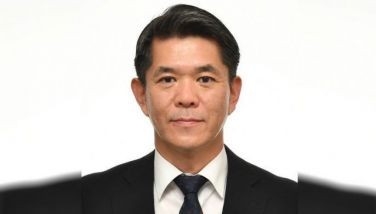Feb inflation slows to 4-year low of 2.6%
March 7, 2007 | 12:00am
The nationwide inflation rate stood at 2.6 percent in February, the slowest rate in four years, the National Statistics Office (NSO) reported yesterday.
Last month’s rise was below central bank and economist forecasts and was also down sharply from 3.9 percent in January, with all commodity groups posting smaller annual price gains, the NSO said.
The government statistics office said the increase in the February consumer price index was the lowest recorded since December 2002, when the rate stood at 2.5 percent.
In the same month last year, inflation was 7.6 percent.
Economists had projected February inflation to come in at 3.1 to four percent, slightly higher than the central bank’s own forecast of three to 3.6 percent.
Consumer prices declined 0.1 percent from the previous month, after having risen 0.3 percent in January compared to December.
The February slowdown reflects both the improving supply conditions as well as the base-effect that made this year’s inflation appear slower since it was coming off a high base year-on-year.
The base effect is expected to keep the inflation rate low until around the end of the second quarter and to rise slightly towards the end of the year when compared to last year’s monthly inflation rates which started to drop in May.
BSP Governor Amando M. Tetangco Jr said the February inflation showed improving supply conditions, indicating that despite the surge in the domestic money supply, prices would not follow suit.
"This shows greater capacity of the economy in harnessing domestic liquidity to support productive activities," Tetangco said. "With the encouraging inflation outlook, it also affirms greater elbow room for setting monetary policy."
The NSO reported that the annual core inflation, which excludes selected food and energy items, eased to three percent in February from 3.9 percent in January.
According to the NSO, the inflation rate for food, beverages and tobacco group eased to three percent in February from 4.3 percent in January. On the other hand, the rate for clothing slowed down to 2.7 percent from three percent; housing and repairs to 2.3 percent from 2.9 percent; fuel, light and water to 1.5 percent from 4.6 percent; services to 2.4 percent from 3.7 percent; and miscellaneous items to two percent from 2.4 percent.
Tetangco said the inflation outlook appeared benign despite the increase in money supply and the BSP is not considering taking extraordinary steps to mop-up liquidity.
The latest available data from the BSP indicate that domestic liquidity grew by 21.4 in December, the highest growth rate ever recorded and dramatically higher than the 14 percent average growth rate used by the BSP for its macro-economic projections.
Even at this level of growth, however, Tetangco said the BSP did not consider it "excessive" and had not seen any indication that the growth pace had any adverse impact on inflation. – With AFP
Last month’s rise was below central bank and economist forecasts and was also down sharply from 3.9 percent in January, with all commodity groups posting smaller annual price gains, the NSO said.
The government statistics office said the increase in the February consumer price index was the lowest recorded since December 2002, when the rate stood at 2.5 percent.
In the same month last year, inflation was 7.6 percent.
Economists had projected February inflation to come in at 3.1 to four percent, slightly higher than the central bank’s own forecast of three to 3.6 percent.
Consumer prices declined 0.1 percent from the previous month, after having risen 0.3 percent in January compared to December.
The February slowdown reflects both the improving supply conditions as well as the base-effect that made this year’s inflation appear slower since it was coming off a high base year-on-year.
The base effect is expected to keep the inflation rate low until around the end of the second quarter and to rise slightly towards the end of the year when compared to last year’s monthly inflation rates which started to drop in May.
BSP Governor Amando M. Tetangco Jr said the February inflation showed improving supply conditions, indicating that despite the surge in the domestic money supply, prices would not follow suit.
"This shows greater capacity of the economy in harnessing domestic liquidity to support productive activities," Tetangco said. "With the encouraging inflation outlook, it also affirms greater elbow room for setting monetary policy."
The NSO reported that the annual core inflation, which excludes selected food and energy items, eased to three percent in February from 3.9 percent in January.
According to the NSO, the inflation rate for food, beverages and tobacco group eased to three percent in February from 4.3 percent in January. On the other hand, the rate for clothing slowed down to 2.7 percent from three percent; housing and repairs to 2.3 percent from 2.9 percent; fuel, light and water to 1.5 percent from 4.6 percent; services to 2.4 percent from 3.7 percent; and miscellaneous items to two percent from 2.4 percent.
Tetangco said the inflation outlook appeared benign despite the increase in money supply and the BSP is not considering taking extraordinary steps to mop-up liquidity.
The latest available data from the BSP indicate that domestic liquidity grew by 21.4 in December, the highest growth rate ever recorded and dramatically higher than the 14 percent average growth rate used by the BSP for its macro-economic projections.
Even at this level of growth, however, Tetangco said the BSP did not consider it "excessive" and had not seen any indication that the growth pace had any adverse impact on inflation. – With AFP
BrandSpace Articles
<
>
- Latest
- Trending
Trending
Latest
Trending
Latest
Recommended



























